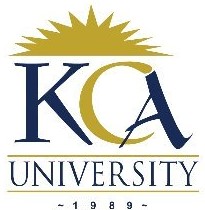 UNIVERSITY EXAMINATIONS: 2018/2019
UNIVERSITY EXAMINATIONS: 2018/2019
EXAMINATION FOR THE DEGREE OF BACHELOR OF SCIENCE IN
INFORMATION TECHNOLOGY
BIT1102A INTERNET TECHNOLOGY
FULL TIME/PART TIME/DISTANCE LEARNING
DATE: APRIL, 2019 TIME: 2 HOURS
INSTRUCTIONS: Answer Question One & ANY OTHER TWO questions.
QUESTION ONE
a) Describe how a computer using DNS resolves the IP address of a domain name. (6 Marks)
b) Explain why two different search engines may provide different results when provided with the
same search term. (3 Marks)
c) The terms Internet and World Wide Web are frequently used as if they are the same thing. Give a
definition for each term that makes the distinction clear. (4 Marks)
d) Explain Three-Way Handshake Mechanism used by TCP to terminate a Session reliably.
(6 Marks)
e) Differentiate between physical addressing and logical addressing (2 Marks)
f) Describe three problems experienced while using hosts.txt for that mapping host names to the
numerical addresses of computers on the ARPANET (3 Marks)
g) Explain the roles of the following intermediary devices (6 Marks)
i. Switch
ii. Router
iii. Hub
QUESTION TWO
a) Internet access is the ability of individuals and organizations to connect to
the Internet using computers and other devices. There are many ways a computer or a terminal can
connect to the internet. From this background, compare the following Internet connection types
(8 Marks)
i. Broadband and DSL
ii. Cable connection and leased line
b) Outline the role of protocols as applied to the Internet and name three protocols frequently used on
the Internet. (4 Marks)
c) Describe four window TCP/IP utilities used in troubleshooting the internet (include their use)
(8 Marks)
QUESTION THREE
a) Internet is a global network of networks through which computers communicate worldwide. How then
does data move around through this global network? The answer is switching. Switching is a process
used to forward packets coming in from one port to a port leading towards the destination. From this
background discuss the following switching techniques. (4Marks)
i. Circuit switching
ii. Packet switching
b) Three essential components of the World Wide Web are; Browsers, Websites and Web Pages. For
each of the three components describe what they are and their function. (9 Marks)
c) Explain the importance of NAT in the context of IPv4 addressing (3 Marks)
d) Explaining their roles differentiate between ARP and RARP (4 Marks)
QUESTION FOUR
a) Internet governance is the development and application of shared principles, norms, rules, decisionmaking procedures, and programs that shape the evolution and use of the Internet. In this context,
discuss the main role for each of the following internet governance bodies:
(6 Marks)
i. the Internet Engineering Task Force (IETF),
ii. Internet Society (ISOC)
iii. the Internet Research Task Force (IRTF.
b) Explain the following in the context of a mobile/cell phone internet connection speed (4 Marks)
i) EDGE
ii) GSM
iii) HSPA
iv) 4G
c) Compare and contrast static and dynamic IP addresses and briefly explain when each is appropriate.
(4 Marks)
d) Given the example URL below, identify its component parts:
http://www.example.com:80/search?q=search+term#part3 (6 Marks)
QUESTION FIVE
a) Read the following html code and explain the purposes of each tag (10 Marks)
<!DOCTYPE html>
<html>
<head>
<title>My First Webpage</title>
</head>
<body>
<h1 align=”center”>My First Webpage</h1>
<p>Welcome to my first web page. I am writing this page using a text editor and plain
old html.</p>
<p>By learning html, I’ll be able to create web pages like a pro….<br>
which I am of course.</p>
</body>
</html>
b) Describe the term loopback address (2 Marks)
c) Distinguish between an email address and the URL and give examples of each (4 Marks)
d) Differentiate between IPv4 and IPv6 Addressing (4 Marks)
